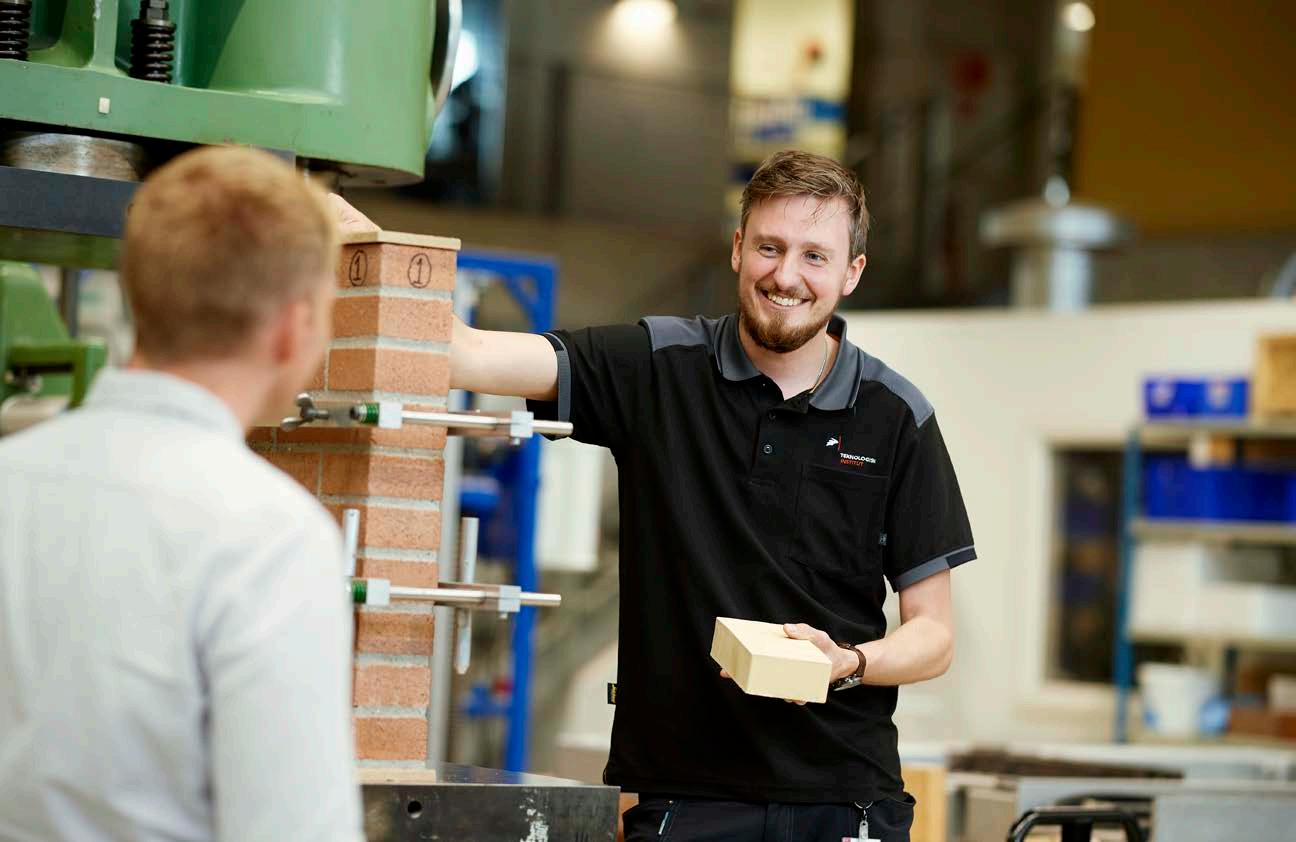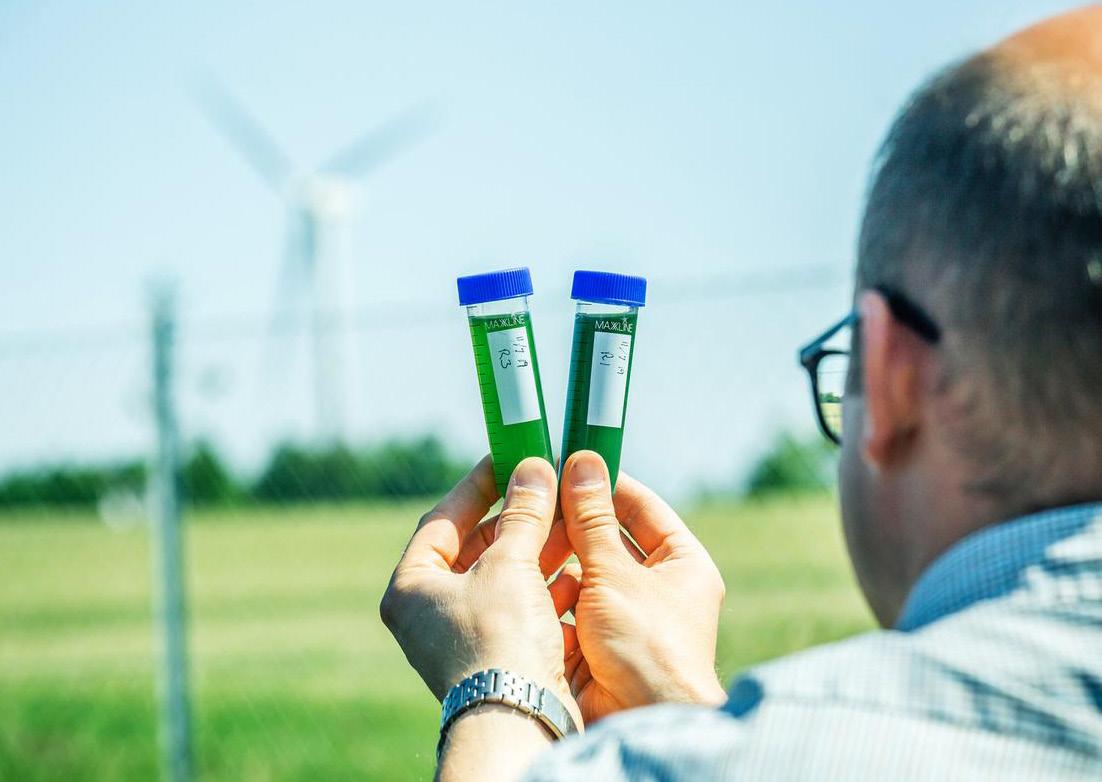
4 minute read
Materials Cases
The climate impact of construction materials is a critical factor in the CO2 accounts
Danish Technological Institute operates the secretariat for Videncenter om Bygningers Klimapåvirkninger (VCBK). VCBK offers guidance to the entire construction industry, including construction clients, advisors, contractors and builder, plumber, electrician, etc. companies. The goal is to increase the industry’s knowledge about climate requirements in the building codes and to build up competences in documenting the total climate impacts of new construction projects.
With VCBK, the actors in the construction sector can stay up to date about the new climate requirements in the building codes, find guidelines and instructional materials that they can use as they wish and there is also a case library with examples of already completed new construction projects.
I have gained a lot from participating in VCBK’s network meeting about climate requirements and LCA. Besides getting a network and exchanging knowledge and ideas with the other participants, I have also received answers to a number of questions so that I can better prepare my company.
Louise Nørregaard Jakobsen, consulting engineer at AFRY
Since VBCK started in March 2022, VCBK has responded to inquiries about climate requirements from around 300 actors in the construction sector, has had more than 500 people sign up for the regional network meetings and been in touch with about 950 participants via webinars.
VCBK is anchored under the Danish Agency for Social Affairs and Housing and acts as a politically independent body. It is driven by a consortium consisting of Danish Technological Institute (consortium leader), BUILD (Aalborg University), WE BUILD DENMARK, the Green Building Council and Primetime Kommunikation.
Large industrial actors are working together on the recycling of plastics
Danish Technological Institute has gathered leading Danish production companies, providers of recycling technologies and the underlying plastics infrastructure in the collaboration platform called Cirkulær Industri Plast (CIP or ‘Circular Industrial Plastics’). The ambition is to increase the recycling rate in the plastics industry by at least 20% in 2025.
CIP wants to implement the recycling solutions on a full scale for certain products within the categories of medical plastic, technical plastic and consumer plastic and show how new recycling technologies can work in a circular economy system. The Institute contributes with its highly specialised knowledge of materials and its competences in project management.
The project is supported by MUDP under the Ministry of Environment of Denmark as a lighthouse project that is to test and demonstrate solutions on a full scale to provide inspiration for the Danish business community. This takes place in a partnership between Novo Nordisk, Danfoss, Coloplast, GRUNDFOS, F&H Group A/S, Coop Danmark, Trebo AS, Zirq Medical A/S, Makeen Power A/S, Crossbridge Energy A/S, Topsoe, Marius Pedersen A/S, Geminor, BASF, Aarhus University, DTU - Technical University of Denmark and Danish Technological Institute (project manager).
Separation of multi-layer foils
Today, multi-layer foils ensure durability and protection fora large number of food products. The foils often have lower carbon footprints than other types of packaging - but the disadvantage is that they are easy to recycle.
Via the performance contract initiative Sustainable Materials, the Institute has developed a technology called Separescue which separates the plastic layers so that they fit into their respective waste fractions without the use of solvents and water.
The Institute is also working on scaling up the technology so that it can be used on a large scale to improve the recycling of multi-layer packaging products.
The performance contract initiative Sustainable materials has been cofinanced by the Danish Ministry for Higher Education and Science.
Textile waste is to turn into new products
With the Danish Government’s climate agreement, there has been specified ambitious targets to increase the recycling rates of textile waste. This has created an urgent need for robust technologies to handle and recycle textiles.
The Institute is also working together with TechKnow and HAACK Recycling ApS to develop a comprehensive solution that collects, sorts and breaks down textile waste so that it can be used in new products that currently might not use recycled materials.
We are looking into a near future where there will be imposed major requirements for recycling textiles and the demand for solutions will be great. Therefore, it is important for us to participate in a CLEAN project such as this where we can exchange knowledge and ideas with Danish Technological Institute about issues from the initial sorting to the production of recycled textile fibres in a good quality for a market with rapidly growing demand.
CEO Christina Haack from HAACK Recycling ApS
The knowledge bridge project Sorting and recycling of textile waste is supported by CLEAN, Denmark’s environmental cluster. The project is a collaboration between Danish Technological Institute, TechKnow and HAACK Recycling ApS.
Recycling complete concrete elements
A direct recycling of concrete structures is the least widespread among the circular solutions for concrete. Among other things, this is due to the complexity that is associated with direct recycling and lack of legislation and standardisation for the area.
In the (P)RECAST project, the Institute is working on developing the technological and documentation-related basis for prefabricated concrete elements from buildings that are to be torn down to be separated, taken down and reused directly as load-bearing structures in a new construction project. This preserves the value of the concrete while also significantly reducing resource consumption and CO2 emissions.
Projektet er støttet af MUDP under Miljøministeriet. projektet medvirker Teknologisk Institut (projektleder), Aarhus Universitet, GXN Innovation / 3XN, Aarsleff, Søndergaard, G. Tscherning, COWI, Peikko Danmark, Hi-Con, AP Ejendomme, Brabrand Boligforening, Fonden Dansk Standard og Branchesammenslutningen Dansk Beton.
Recycling destroyed pumps using 3D printing technology
The Institute has helped the company called Bentax to develop 3D-printed spare parts for milk pumps.
Replacing milk pumps is a major expense for the company, as individual components in the pumps are quickly worn out but cannot be bought as separate spare parts. By 3D printing spare parts, this minimises waste and expenses in the production process - and it will also be possible for the company to recycle destroyed and discarded milk pumps by replacing the 10% of the milk pumps that typically suffer from wear and tear.
We have now had the opportunity to verify a technology that we would otherwise not have embraced. The results we have seen have exceeded all of our expectations, and when we held the components in our hands, no one really believed that they had been 3D printed.
Anders Myrup, Technical Project Manager, Bentax
The collaboration started as a MADE demonstration project that offers small and medium-sized companies support in solving a specific challenge facing their company or a chance to test a new technology in their production processes.










